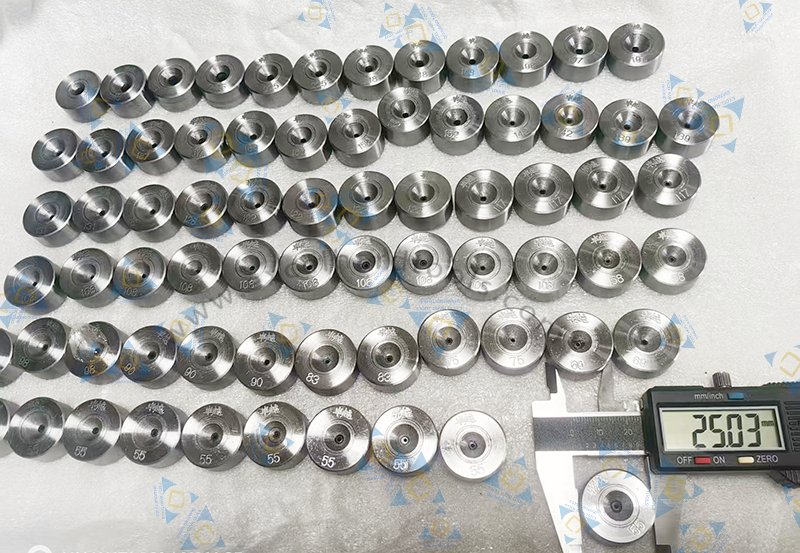According to the binder of pcd drawing die blanks, there are two kinds of PCD wire drawing die .
Cobalt-based Polycrystalline Diamond (PCD) drawing die and Silicon-based Polycrystalline Diamond (PCD) drawing die. and you can simply understand the binder as "adhesive". Its function is to firmly "stick" the small diamond particles together to form a solid and strong whole. The most common and accurate way to distinguish between cobalt-based and silicon-based drawing dies is through magnetism. Cobalt-based polycrystalline diamond (PCD): Since cobalt itself is a ferromagnetic material, when a small magnet is brought close to the die core, it will be attracted. Silicon-based polycrystalline diamond (PCD): Silicon is non-magnetic, so it will not be attracted by a magnet.

Comparison List of Cobalt-based and Silicon-based Polycrystalline diamond drawing dies
Comparision Commodity | Cobalt-based PCD drawing dies | Silicon-based PCD drawing dies |
Magnetic Differentiation | Attractive to magnets (magnetic) | Non-magnetic |
Main Characteristics | High bonding strength, overall denser structure | Slightly lower bonding strength, relatively looser structure |
Wear Resistance | High | Relatively High |
Polishing Performance | Excellent, high surface finish | Slightly inferior, may have minor scratches |
Impact Resistance | Relatively good | Ordinary |
Applicable Wire Materials | High-hardness and high-toughness materials (such as stainless steel, copper alloys) | Ordinary carbon steel, aluminum, copper, etc. |
Price | Higher | Lower, good cost performance |
Overall, cobalt-based dies offer more comprehensive performance and are suitable for high-demand applications; silicon-based dies also perform well in general drawing processes and are more economical.
Diamond wire drawing die selection reference
According to the material of the wire and processing requirements, you can make a quick judgment as follows:
The case of preferred cobalt-based (PCD):
Wire material: Stainless steel, high-strength steel wire, copper alloy and other materials with high hardness or good toughness.
High surface quality requirements: Situations where the surface smoothness of the wire is strictly required.
Pursuing long service life: Hoping for a longer service life of the drawing die and reducing the frequency of replacement.
The situation of silicon-based (PCD) can be considered:
Wire material: Relatively soft materials such as common low-carbon steel, aluminum wire, pure copper wire, etc.
Cost-sensitive: Limited budget, pursuing higher cost performance.
Rough drawing or pre-treatment: In some rough drawing or pre-treatment processes where surface quality requirements are not high.